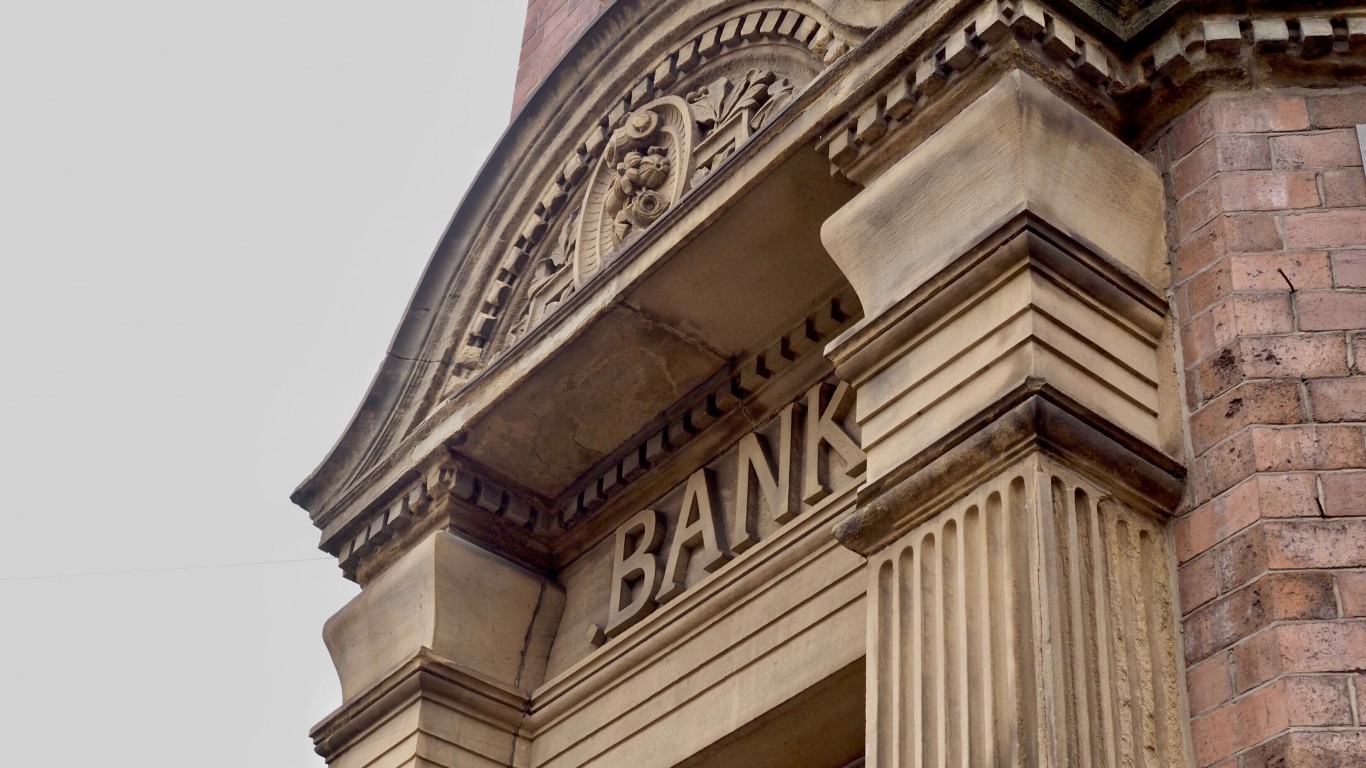Investing
With Sovereign Bond Yields Rising, Banks Likely to Feel the Heat Again

Published:

Sovereign bond yields worldwide have surged to record-high levels recently as the Federal Reserve and other global central banks look determined to keep interest rates ‘higher for longer.’ This rout in the global bond markets can be detrimental to governments and banks, which are large holders of these securities.
After facing and outriding a severe sector-wide crisis earlier this year, banks may be in for another rollercoaster ride. Why? Rising bond yields.
The global bond markets face another potential rout as ‘higher for longer’ interest rates spark fears. Notably, the 10-year US bond yields are sitting at 16-year highs, while in Germany, they hit the highest level since the 2011 eurozone debt crisis. In Japan, where official rates are still negative, bond yields stand at their 10-year peaks.
Bond yields are closely followed because they determine governments’ funding expenses. In other words, the longer yields remain higher, the more they drive the interest costs governments have to pay.
But the domino effects of rising bond yields extend way beyond government funding, and one particular sector that could suffer from this is banking. This is because banks are large holders of government bonds that sit on unrealized losses – a significant risk highlighted by the Silicon Valley Bank’s (SVB) collapse in March.
“(The bond selloff) will have a strong impact on banks that hold long end Treasuries. The longer it persists the more sectors it will hit.”
– said Mahmood Pradhan, head of macro at Amundi Investment Institute.
Meanwhile, rising interest rates and bond yields have also weighed on banks’ stock prices. Although the relationship between yields and the relative performance of bank stocks used to move in tandem, the same cannot be said for the current rate-hiking cycle.
Higher interest rates have been negatively impacting bank share prices. And with the Federal Reserve’s recently announced plans to keep rates elevated longer, the pressure on banks will likely continue.
Among many other things, bonds were one of the factors that contributed to SVB’s collapse this spring. Because the bank had a few traditional banking use cases for its excess cash, it invested $91 billion in Treasury bonds and government agency mortgage-backed securities.
These investments comprised about half of SVB’s assets, twice the banks’ average. However, when the Federal Reserve raised interest rates, bond prices plummeted, causing SVB’s bond holdings to lose $21 billion in market value.
This news led to depositors withdrawing their funds, forcing SVB to sell bonds, and they could no longer be considered held-to-maturity (HTM). Instead, they were categorized as “available for sale.” This shift in classification led to marked-down values on SVB’s financial statements, and actual sales crystallized the losses, contributing to the bank’s downfall.
This article originally appeared on The Tokenist
The average American spends $17,274 on debit cards a year, and it’s a HUGE mistake. First, debit cards don’t have the same fraud protections as credit cards. Once your money is gone, it’s gone. But more importantly you can actually get something back from this spending every time you swipe.
Issuers are handing out wild bonuses right now. With some you can earn up to 5% back on every purchase. That’s like getting a 5% discount on everything you buy!
Our top pick is kind of hard to imagine. Not only does it pay up to 5% back, it also includes a $200 cash back reward in the first six months, a 0% intro APR, and…. $0 annual fee. It’s quite literally free money for any one that uses a card regularly. Click here to learn more!
Flywheel Publishing has partnered with CardRatings to provide coverage of credit card products. Flywheel Publishing and CardRatings may receive a commission from card issuers.
Thank you for reading! Have some feedback for us?
Contact the 24/7 Wall St. editorial team.